How Can I Learn Robotics? This is a question many aspiring roboticists ask. At LEARNS.EDU.VN, we provide a comprehensive roadmap to acquiring robotics skills, covering essential tools, design principles, programming techniques, electronics knowledge, and project-based applications. Discover the path to mastering robotics, and unlock exciting possibilities in this dynamic field, with resources like coding tutorials, CAD software guides, and sensor integration techniques.
1. Understanding the Landscape of Robotics Education
Robotics is a multidisciplinary field blending engineering, computer science, and design. It’s about creating intelligent machines that can perform tasks autonomously or with minimal human intervention. Learning robotics involves understanding mechanical engineering, electronics, computer programming, and artificial intelligence. The field is constantly evolving, with new technologies and applications emerging regularly.
- Mechanical Engineering: Focuses on the physical design and construction of robots, including their structure, joints, and actuators.
- Electronics: Deals with the electrical components and circuits that power and control robots.
- Computer Programming: Involves writing code to control the robot’s behavior, process sensor data, and make decisions.
- Artificial Intelligence: Enables robots to perceive their environment, learn from experience, and make intelligent decisions.
Understanding these core disciplines is the first step in your robotics journey.
2. Setting Your Robotics Learning Goals
Before diving into the specifics, define your learning objectives. What do you want to achieve with your robotics knowledge? Are you interested in building your own robots, pursuing a career in robotics, or simply exploring the field out of curiosity?
Here are some potential goals:
- Build a simple robot that can navigate a maze.
- Design and 3D-print a custom robot arm.
- Develop a machine learning algorithm for robot vision.
- Secure an internship or job in the robotics industry.
Having clear goals will help you stay focused and motivated throughout your learning journey. It will also enable you to select the right resources and tailor your learning path to your specific interests and needs.
3. Essential Materials and Tools for Robotics
Embarking on your robotics journey requires a foundation of materials and tools. While robotics can be an investment, acquiring the right equipment from the start ensures a smoother and more efficient learning experience.
3.1 Basic Parts and Components
| Component | Description | Example |
|---|---|---|
| Microcontrollers | The “brains” of your robot, responsible for processing information. | Arduino Uno, Raspberry Pi |
| Motors | Provide movement and power to your robot. | DC motors, servo motors, stepper motors |
| Sensors | Allow your robot to perceive its environment. | Ultrasonic sensors, infrared sensors, light sensors |
| Actuators | Convert energy into mechanical motion. | Relays, solenoids |
| Power Supply | Provides the necessary power to operate your robot. | Batteries, power adapters |
| Wires | Connect the various components of your robot. | Jumper wires, breadboard wires |
| Breadboard | A solderless prototyping tool for building and testing circuits. | Standard breadboard with multiple connection points |
| Resistors | Limit the flow of current in a circuit. | Various resistance values to control current and voltage |
| Capacitors | Store electrical energy in a circuit. | Different capacitance values for filtering and energy storage |
| Diodes | Allow current to flow in one direction only. | Rectifier diodes, signal diodes, LED diodes |
| Transistors | Amplify or switch electronic signals and electrical power. | Bipolar junction transistors (BJTs), field-effect transistors (FETs) |
| Integrated Circuits (ICs) | Packaged electronic circuits with multiple components on a single chip. | Operational amplifiers (op-amps), timers, logic gates |
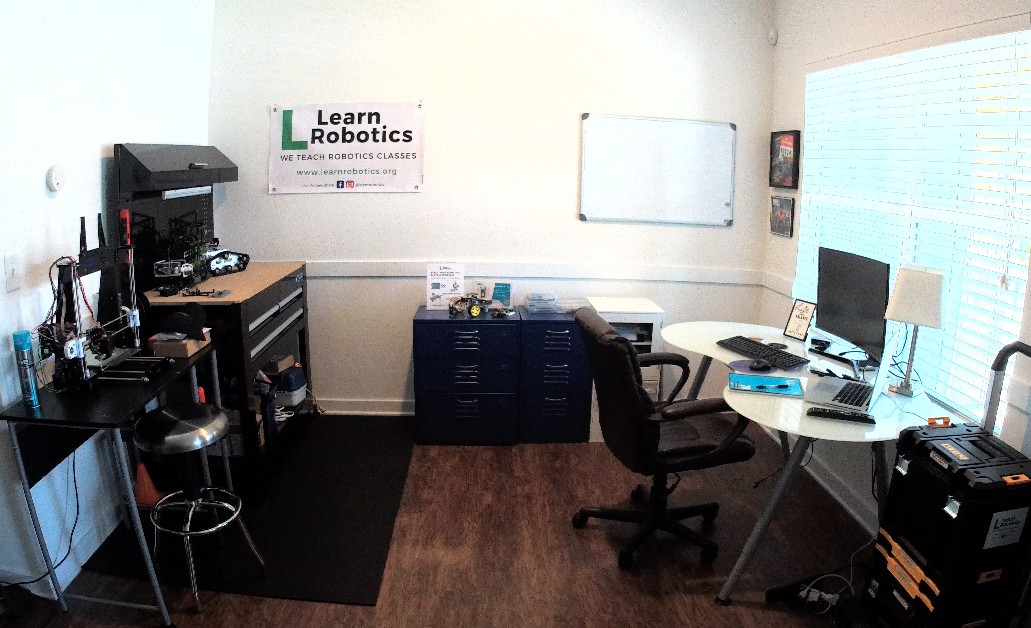
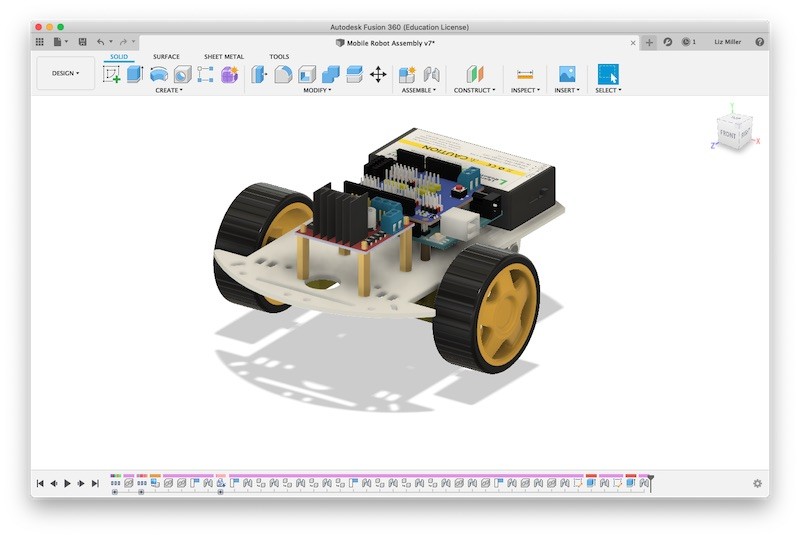
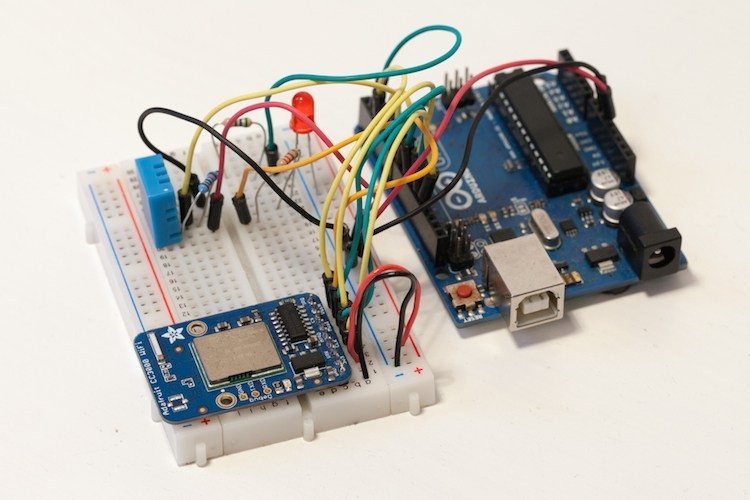
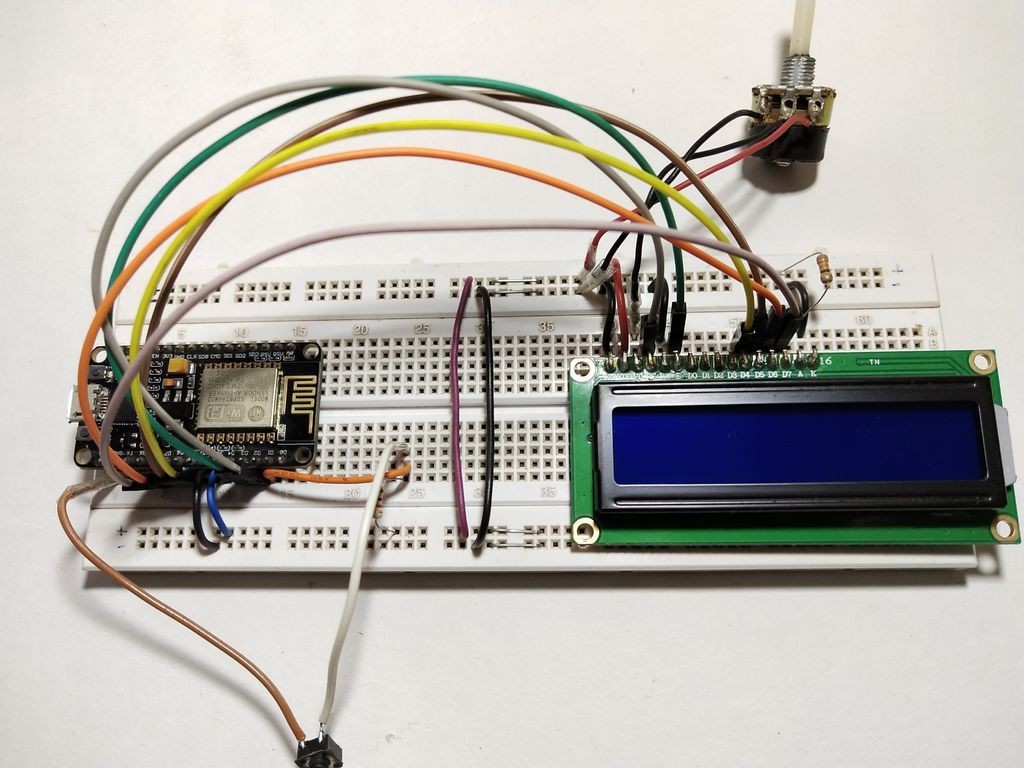
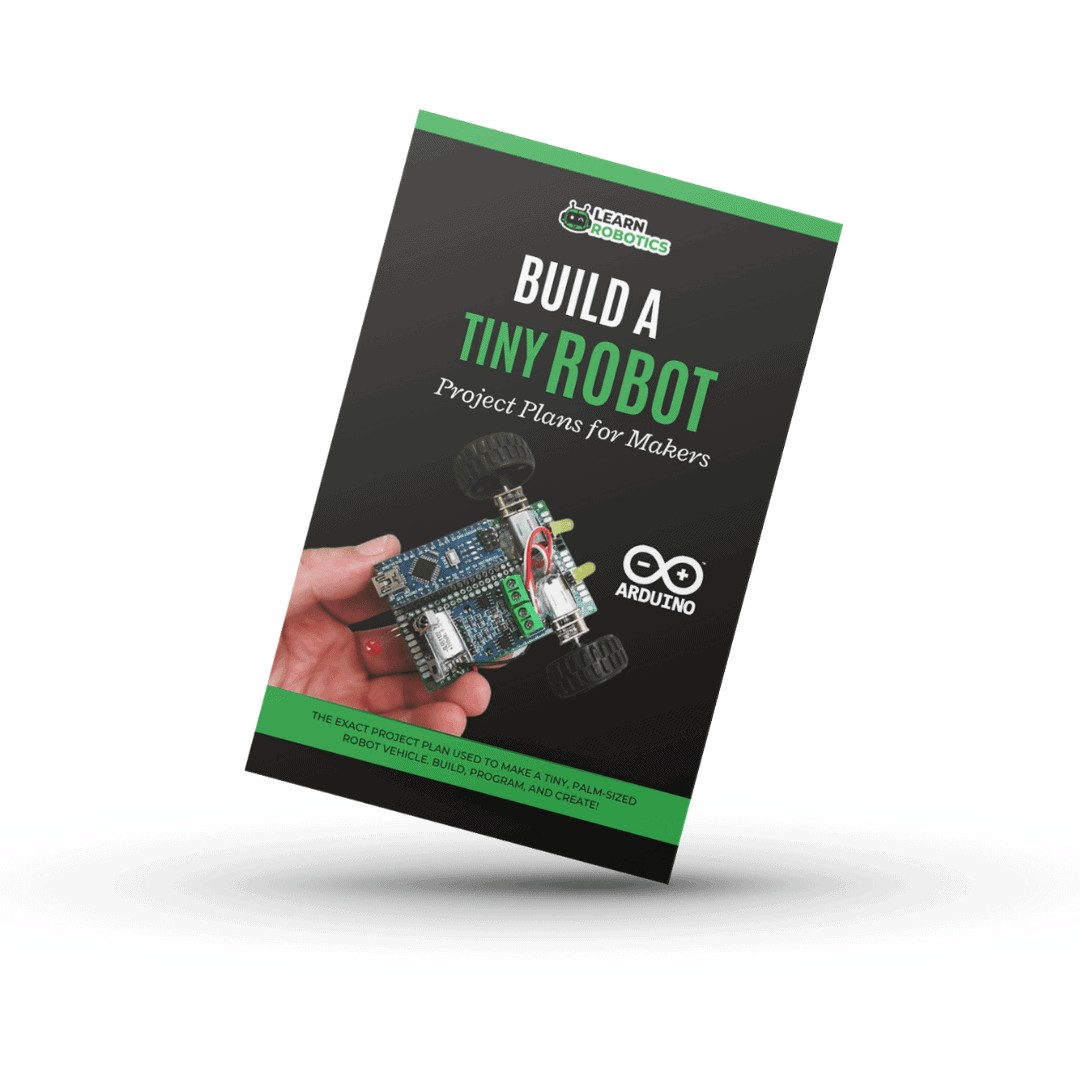
3.2 Robotics Tool Essentials
Investing in quality tools is crucial for building and maintaining robots. Durable tools will last longer and provide more accurate results, saving you time and frustration in the long run.
| Tool | Description | Recommended Brands |
|---|---|---|
| Multimeter | Measures voltage, current, and resistance. | Fluke, Keysight, Klein Tools |
| Wire Strippers | Remove insulation from wires. | Ideal, Klein Tools, Irwin |
| Soldering Iron | Melts solder to create electrical connections. | Weller, Hakko, Metcal |
| Solder | A metal alloy used to create electrical connections. | Kester, MG Chemicals, AIM |
| Pliers | Used for gripping, cutting, and bending wires. | Klein Tools, Channellock, Milwaukee |
| Screwdrivers | Used for tightening and loosening screws. | Wera, Wiha, Felo |
| Allen Wrenches | Used for tightening and loosening Allen screws. | Bondhus, Wera, Wiha |
| 3D Printer | Creates three-dimensional objects from digital designs. | Prusa, Creality, Ultimaker |
| Oscilloscope | Displays and analyzes electronic signals. | Tektronix, Keysight, Rigol |
| Logic Analyzer | Analyzes digital signals and protocols. | Saleae, Tektronix, Keysight |
| Power Supply | Provides stable and adjustable power for testing circuits. | Keysight, Tektronix, Rigol |
| Function Generator | Generates various electrical waveforms for testing. | Keysight, Tektronix, Rigol |
| Hand Drill | Used for drilling holes in various materials. | DeWalt, Bosch, Milwaukee |
3.3 Safety First
- Safety Glasses: Protect your eyes from flying debris.
- Gloves: Protect your hands from chemicals and sharp objects.
- Ventilation: Work in a well-ventilated area to avoid inhaling fumes from soldering or 3D printing.
Remember, safety should always be a top priority when working with electronics and robotics.
4. Mastering CAD for Robot Design
Computer-Aided Design (CAD) is a crucial skill for designing and visualizing robots. CAD software allows you to create detailed 3D models of your robot, simulate its movements, and generate manufacturing drawings.
4.1 Recommended CAD Software
- Fusion 360: A professional-grade CAD/CAM software with a free license for hobbyists and students. It offers a wide range of features for designing, simulating, and manufacturing parts.
- OnShape: A cloud-based CAD software that allows you to collaborate with others in real-time.
- TinkerCAD: A beginner-friendly CAD software that’s perfect for learning the basics of 3D modeling.
- SketchUp: Another user-friendly CAD software with a large library of pre-made models.
I recommend starting with our Fusion 360 Tutorials for Robotics (or getting our Digital Guide), where you can learn how to design an Industrial Robot Arm from start to finish.
4.2 Learning CAD Techniques
- Start with the basics: Learn how to create basic shapes, extrude them, and combine them to form more complex objects.
- Practice regularly: The more you use CAD software, the better you’ll become.
- Follow tutorials: There are many free tutorials available online that can help you learn specific CAD techniques.
- Design a robot arm: A robot arm is a great project for learning CAD because it involves designing complex mechanical components and assemblies.
4.3 CAD Resources at LEARNS.EDU.VN
At LEARNS.EDU.VN, you can find a wealth of resources to help you master CAD for robotics. We offer tutorials, guides, and courses that cover a wide range of CAD software and techniques. Whether you’re a beginner or an experienced designer, you’ll find something to help you improve your skills.
5. Programming the Robot Brain
Programming is the key to bringing your robot to life. It involves writing code that controls the robot’s behavior, processes sensor data, and makes decisions.
5.1 Choosing a Programming Language
- C++: A powerful language that’s widely used in robotics for its performance and control over hardware.
- Python: A beginner-friendly language that’s easy to learn and has a large library of robotics-related packages.
- Java: A versatile language that’s used in robotics for its platform independence and object-oriented programming features.
If you’re new to programming, I recommend starting with Python. It’s easy to learn and has a large community of users who can help you get started.
5.2 Microcontrollers and Single-Board Computers
- Arduino: An open-source microcontroller platform that’s popular among hobbyists and beginners. It’s easy to program and has a large library of example code and tutorials.
- Raspberry Pi: A single-board computer that’s more powerful than Arduino. It can run a full operating system and is suitable for more complex robotics projects.
I recommend starting with the Arduino Uno. It’s easy to learn, and there’s a ton of support for it across the Internet.
5.3 Essential Programming Concepts
- Variables: Used to store data in your program.
- Data Types: Define the type of data that a variable can hold (e.g., integer, float, string).
- Control Structures: Control the flow of execution in your program (e.g., if-else statements, for loops, while loops).
- Functions: Reusable blocks of code that perform a specific task.
- Object-Oriented Programming: A programming paradigm that organizes code into objects, which are instances of classes.
5.4 Programming Resources at LEARNS.EDU.VN
LEARNS.EDU.VN offers a variety of programming resources for robotics, including tutorials, guides, and courses. We cover a wide range of programming languages and platforms, from Arduino to Raspberry Pi to ROS (Robot Operating System).
Here are some additional Arduino resources to help you gain robotics skills:
- Simple Guide to Arduino
- Four Steps to Writing any Arduino program
6. Electronics and Circuit Design for Robotics
Electronics and circuit design are essential for building and controlling robots. Understanding basic electronic components, circuits, and sensors will allow you to create robots that can interact with their environment.
6.1 Basic Electronic Components
- Resistors: Limit the flow of current in a circuit.
- Capacitors: Store electrical energy in a circuit.
- Diodes: Allow current to flow in one direction only.
- Transistors: Amplify or switch electronic signals.
- Integrated Circuits (ICs): Packaged electronic circuits with multiple components on a single chip.
6.2 Circuit Design Fundamentals
- Series Circuits: Components are connected in a single path.
- Parallel Circuits: Components are connected in multiple paths.
- Voltage Dividers: Used to reduce voltage levels in a circuit.
- Operational Amplifiers (Op-Amps): Used to amplify signals and perform other signal processing functions.
- Transistor Circuits: Used to switch or amplify signals.
6.3 Breadboarding
A breadboard is a solderless prototyping tool that allows you to build and test circuits quickly and easily. It consists of a grid of holes that are connected internally in rows and columns.
6.4 Custom PCB Design
Once you’re comfortable with breadboarding, you can move on to designing your own printed circuit boards (PCBs). PCBs are more robust and reliable than breadboard circuits.
6.5 Electronics Resources at LEARNS.EDU.VN
LEARNS.EDU.VN offers a variety of electronics resources for robotics, including tutorials, guides, and courses. We cover a wide range of topics, from basic electronic components to advanced circuit design techniques.
Here are some of our popular electronics and circuit tutorials that will help you gain robotics skills.
- How to use L298N Motor Driver
- Create a PCB Online
7. Integrating Sensors for Robot Perception
Sensors allow robots to perceive their environment and make informed decisions. Understanding different types of sensors and how to use them is crucial for building autonomous robots.
7.1 Types of Sensors
- Ultrasonic Sensors: Measure distance to objects by emitting ultrasonic waves and measuring the time it takes for the waves to return.
- Infrared Sensors: Detect infrared light emitted by objects.
- Light Sensors: Measure the intensity of light.
- Temperature Sensors: Measure temperature.
- Force Sensors: Measure force or pressure.
- Gyroscopes: Measure angular velocity.
- Accelerometers: Measure acceleration.
- Cameras: Capture images and videos.
7.2 Digital vs. Analog Sensors
- Digital Sensors: Provide a discrete output signal (e.g., on or off).
- Analog Sensors: Provide a continuous output signal that varies with the measured quantity.
7.3 Sensor Interfacing
- Wiring Sensors to Microcontrollers: Connecting sensors to microcontrollers requires understanding the sensor’s power requirements, output signal type, and communication protocol.
- Reading Sensor Data: Reading sensor data involves using the microcontroller’s analog-to-digital converter (ADC) or digital input pins.
7.4 Sensor Calibration
Sensor calibration is the process of adjusting a sensor’s output to ensure that it provides accurate readings.
7.5 Sensor Resources at LEARNS.EDU.VN
LEARNS.EDU.VN offers a variety of sensor resources for robotics, including tutorials, guides, and courses. We cover a wide range of sensors and sensor interfacing techniques.
To continue your learning, I recommend reading these articles on Learn Robotics.
- Understand how sensors work
- Raspberry Pi Servo Motor
8. Project-Based Learning: Building Your Own Robots
The best way to learn robotics is by doing. Working on hands-on projects will allow you to apply your knowledge, develop your skills, and gain valuable experience.
8.1 Simple Robot Projects
- Line-Following Robot: A robot that follows a line on the floor.
- Obstacle-Avoiding Robot: A robot that can navigate around obstacles.
- Remote-Controlled Robot: A robot that can be controlled remotely using a joystick or smartphone.
8.2 Advanced Robot Projects
- Robot Arm: A robot with one or more arms that can be used to perform tasks such as picking and placing objects.
- Autonomous Vehicle: A robot that can navigate without human intervention.
- Humanoid Robot: A robot that resembles a human.
8.3 Project Resources at LEARNS.EDU.VN
LEARNS.EDU.VN offers a variety of project resources for robotics, including project plans, tutorials, and code examples. We also have a community forum where you can ask questions and share your projects with others.
If that isn’t enough, you can check out the full list of 35+ Robotics Projects or get a copy of the Tiny Robot or Mini Wifi Robot project plans.
Downloadable Robotics Project Plans
| Project Name | Description | Skills Required |
|---|---|---|
| Line Following Robot | A robot that follows a line on the floor. | Basic electronics, Arduino programming, sensor integration |
| Obstacle Avoiding Robot | A robot that can navigate around obstacles. | Intermediate electronics, Arduino programming, sensor integration |
| Robot Arm | A robot with one or more arms that can be used to perform tasks. | Advanced electronics, CAD, Arduino programming, motor control |
| Autonomous Vehicle | A robot that can navigate without human intervention. | Advanced electronics, ROS, sensor fusion, path planning |
9. Explore Robotics Books
Books can be a valuable resource for learning robotics, providing in-depth explanations, step-by-step instructions, and real-world examples.
9.1 Recommended Robotics Books
| Book Title | Description | Focus Area |
|---|---|---|
| Robotics for Beginners | A comprehensive introduction to robotics for beginners. | Basic concepts, electronics, programming |
| Practical Robotics in C++ | A hands-on guide to building robots using C++. | C++ programming, motor control, sensor integration |
| Introduction to Autonomous Mobile Robots | A textbook covering the principles of autonomous mobile robots. | Path planning, localization, mapping |
| Robot Operating System (ROS) for Beginners | A guide to using ROS for robotics development. | ROS, software development, robot control |
| Programming Robots with ROS | Teaches how to program robots using the Robot Operating System (ROS). | ROS programming, robot control, simulation |
9.2 Robotics Books at LEARNS.EDU.VN
LEARNS.EDU.VN offers a selection of robotics books that can help you deepen your understanding of the field. Our books cover a wide range of topics, from basic concepts to advanced techniques.
That’s why we have robotics books available in our shop.
10. Robotics Certifications and Training Programs
For structured learning and career advancement, consider pursuing robotics certifications and training programs.
10.1 Benefits of Certifications
- Demonstrate your knowledge and skills to employers.
- Gain a competitive edge in the job market.
- Validate your expertise in a specific area of robotics.
- Enhance your career prospects.
10.2 Robotics Certifications
- Certified Robotics Technician (CRT): A certification for technicians who install, maintain, and repair robots.
- Certified Automation Professional (CAP): A certification for engineers who design, implement, and manage automation systems.
- Robotics Certification at LEARNS.EDU.VN: LEARNS.EDU.VN offers a Robotics Certification program that covers a wide range of robotics topics.
10.3 Training Programs
- University Programs: Many universities offer undergraduate and graduate programs in robotics.
- Vocational Schools: Vocational schools offer training programs in robotics and automation.
- Online Courses: Online courses are a convenient way to learn robotics at your own pace.
Part of my goal with Learn Robotics is to educate people on robotics and tech topics.
Now we’ve helped thousands of enthusiasts get into robotics.
What Online Robotics Courses should I take?
I’m a huge advocate for Coursera Plus mostly because you’ll gain access to over 3,000+ courses, Specializations, and Professional Certificates for one price, taught by recognizable universities.
FAQ: Your Robotics Learning Questions Answered
Q1: What are the fundamental skills needed to learn robotics?
A1: You need a solid understanding of mechanical engineering, electronics, programming (C++ or Python), and basic math.
Q2: Is it possible to learn robotics without a formal engineering degree?
A2: Yes, many resources like online courses, books, and communities can help you learn robotics. Hands-on experience is invaluable.
Q3: What’s the best programming language for robotics?
A3: Python is great for beginners due to its simplicity and extensive libraries. C++ is preferred for performance-critical applications.
Q4: How important is CAD software in robotics?
A4: CAD is crucial for designing and simulating robot parts. Fusion 360 is a popular choice, offering free licenses for hobbyists.
Q5: What’s the role of sensors in robotics?
A5: Sensors allow robots to perceive their environment. Understanding sensor types and how to integrate them is key.
Q6: Where can I find good robotics project ideas for beginners?
A6: Websites like LEARNS.EDU.VN offer project plans and tutorials for various skill levels.
Q7: Are robotics kits a good starting point for learning?
A7: Yes, they provide a structured way to learn and experiment with robotics components.
Q8: How can I stay updated with the latest trends in robotics?
A8: Follow robotics blogs, attend conferences, and join online communities.
Q9: What career opportunities are available in robotics?
A9: Robotics engineers, automation specialists, researchers, and more.
Q10: How much does it cost to get started with robotics?
A10: Costs vary, but you can start with a basic Arduino kit for under $100 and gradually invest in more advanced tools and components.
Conclusion: Your Robotics Journey Begins Now
Learning robotics is a rewarding journey that combines technical skills, creativity, and problem-solving. By following the steps outlined in this guide and utilizing the resources available at LEARNS.EDU.VN, you can acquire the knowledge and skills you need to succeed in this exciting field.
Ready to take the next step? Explore the courses and resources at LEARNS.EDU.VN to start your robotics journey today. We offer a wide range of tutorials, guides, and project plans to help you learn robotics at your own pace.
Need Robotics Help Beyond this Guide?
✅ Take our Beginner’s Robotics Certification if you have zero to little coding experience or are a complete beginner.
✅ Join our Robotics Mentorship program if you already have an engineering background (mechanical, electrical, software) and want to make money working in the robotics industry.
Visit LEARNS.EDU.VN at 123 Education Way, Learnville, CA 90210, United States. Contact us via Whatsapp at +1 555-555-1212, or visit our website, learns.edu.vn, to learn more and embark on your educational journey.